index
Matt Lebo
Department Chair, Professor
matthew.lebo@uwo.ca
519-661-2111 x88562
@MattLebo4
Papers
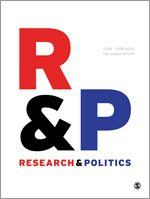 The GECM in Practice. Forthcoming at Research and Politics.
The GECM in Practice. Forthcoming at Research and Politics.
Abstract: Enns, Kelly, Masaki, and Wohlfarth (2016) respond to recent work by
Grant and Lebo (2016) and Lebo and Grant (2016) that raise a number of concerns with political scientists' use of the general error correction model (GECM). While agreeing with the particular rules one should apply when using unit root data in the GECM, Enns et al. still advocate procedures that will lead researchers astray. Most especially, they fail to recognize the difficulty in interpreting the GECM's "error correction coefficient." Without being certain of the univariate properties of one's data it is extremely difficult (or perhaps impossible) to know whether or not cointegration exists and error correction is occurring. We demonstrate the crucial differences for the GECM between having evidence of a unit root (from Dickey-Fuller tests) versus actually having a unit root. Looking at simulations and two applied examples we show how overblown findings of error correction await the uncareful researcher.
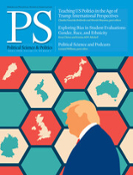 Managing Your Research Pipeline. Forthcoming at PS: Political Science.
Managing Your Research Pipeline. Forthcoming at PS: Political Science.
Abstract: A researcher’s “pipeline” refers to the progression of papers from the idea stage to the publication stage. Tenure-track faculty and graduate students are often told that a busy pipeline is the way to tenure. But, beyond the simple pushes such as “work harder,” “write more,” and “publish more,” there is not a lot of direction given on how junior scholars should think about and manage their research pipeline. How does one go about developing a large number of papers from their first stages to the pages of respected journals? In this paper I discuss my system for pipeline management. The system works by, first, breaking apart the difficult exercise of publishing a paper into eight manageable stages and, second, helping to organize a set of papers through these steps according to a practicable timeline.
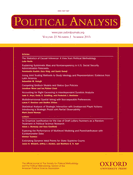 Error Correction Methods with Political Time Series
Error Correction Methods with Political Time Series
With Taylor Grant, Political Analysis 24:3-30.
Abstract: While traditionally considered for non-stationary and cointegrated data, DeBoef and Keele (2008) suggest applying a General Error Correction Model to stationary data with or without cointegration. The GECM has since become extremely popular in political science but practitioners have confused essential points. For one, the model is treated as perfectly flexible when, in fact, the opposite is true. Time series of various orders of integration - stationary, non-stationary, explosive, near- and fractionally-integrated - should not be analyzed together but researchers consistently make this mistake. Also, the ECM coefficient's sampling distribution moves dramatically depending upon the order of integration, sample size, number of covariates, and the boundedness of Y. This means that practitioners are likely to overstate evidence of error correction, especially when using a traditional t-test. Other hypothesis tests and long-run-multipliers are also unreliable in unbalanced equations. We evaluate common GECM practices with six types of data, 664 simulations, and five paper replications.
Supplementary Materials Replication Files
 Equation Balance and Dynamic Political Modeling
Equation Balance and Dynamic Political Modeling
With Taylor Grant, Political Analysis 3:69-82.
Abstract: The papers in this symposium agree on several points. In this paper we sort through some remaining areas of disagreement and discuss some of the practical issues of time series modeling we think deserve further explanation. In particular, we have five points: (1) clarifying our stance on the GECM in light of the comments in this issue; (2) clarifying equation balance and discussing how bounded series affects our thinking about stationarity, balance, and modeling choices; (3) answering lingering questions about our Monte Carlo simulations and exploring potential problems in the inferences drawn from long-run multipliers; (4) reviewing and defending fractional integration methods in light of the questions raised in this symposium and elsewhere, and (5) providing a short practical guide to estimating a multivariate ARFIMA model with or without an error correction term.
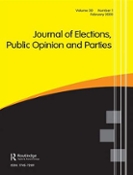 Forecasting British Elections: The 'PM and the Pendulum' Model Reconsidered
Forecasting British Elections: The 'PM and the Pendulum' Model Reconsidered
With Helmut Norpoth, The Journal of Elections, Public Opinion and Parties
Abstract: Various approaches have been taken to forecasting the outcomes of elections. The “PM and the Pendulum” model uses Prime Ministerial Approval as the sole short-term predictor of the vote in British General Elections. Here we test the forecasting power of this predictor against a close rival – Government Approval. Using a time-varying parameter estimator, we demonstrate that between elections and especially in the months preceding a General Election, PM Approval is the most accurate predictor of both governing party vote intentions and the actual vote on Election Day, as measured in governing party vote share.The autoregressive model for translating votes into seats, based on elections from 1910 onward, provides an almost exact prediction of the outcome of the 2010 contest.
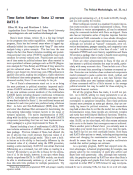 Time Series Software: State 12 vs RATS 8
Time Series Software: State 12 vs RATS 8
With Ellen Key, The Political Methodologist 20(1)
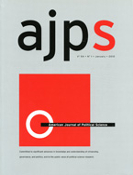 An Effective Approach to the Repeated Cross Sectional Design
An Effective Approach to the Repeated Cross Sectional Design
With Christopher Weber, University of Arizona. American Journal of Political Science 59(1), 242-58.
Abstract: Repeated cross-sectional (RCS) designs are distinguishable from true panels and pooled cross-sectional-time-series (PCSTS) since cross-sectional units – e.g. individual survey respondents – appear but once in the data. This poses two serious challenges. First, as with PCSTS, autocorrelation threatens inferences. However, common solutions like differencing and using a lagged dependent variable are not possible with RCS since lags for i cannot be used. Second, although RCS designs contain information that allows both aggregate- and individual-level analyses, available methods – from pooled OLS to PCSTS to time series – force researchers to choose one level of analysis. The PCSTS toolkit does not provide an appropriate solution and we offer one here: double filtering with ARFIMA methods to account for autocorrelation in longer RCS followed by the use of multilevel modeling (MLM) to estimate both aggregate- and individual-level parameters simultaneously. We use Monte-Carlo experiments and three applied examples to explore the advantages of our framework.
Slides IMC webinar with slides R Package on Cran R Package Documentation
R Package Presentation Supporting Information
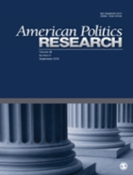 Strategic Party Government and the 2010 Elections
Strategic Party Government and the 2010 Elections
With Greg Koger, American Politcal Research, 2012, 40(5): 927-945
Abstract: This article applies the strategic parties framework to the 111th Congress and 2010 election results that followed. In 2009-2010, the Democrats pursued an ambitious agenda over the nearly unanimous opposition of Congressional Republicans, leading to a high level of partisanship on both sides. This partisanship was costly in the 2010 elections. Like other papers on this election, we find some evidence that key roll calls were linked to decreased electoral vote share. However, the clearer pattern is that overall patterns of partisanship had a consistent detrimental effect on incumbents running for reelection.
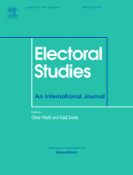 Yes, Prime Minister: The Key to Forecasting British Elections
Yes, Prime Minister: The Key to Forecasting British Elections
With Helmut Norpoth, Electoral Studies, 2011, 30: 258-263
Abstract: We use our "PM and the Pendulum" Model to forecast the outcome of the 2011 General election. The vote function of the model, aside from a cyclical dynamic, relies of approval of the prime mister as the sole predictor. We find that PM Approval predicts the vote (and vote intention between elections) more accurately than does Government Approval. Turning to the forecasting of seats, we examing the accuracy of the autoregressive model of the vote-seat translation against the uniform-swing model, which is widely used by pollsters and the media. Testing the alternatives on election data since 1910, our autoregressive vote-seat translation model proves superior to the uniform-swing model.
 The President's Role in the Partisan Congressional Arena
The President's Role in the Partisan Congressional Arena
With Andrew O'Geen, Journal of Politics, 2011, 73: 718-734
Abstract: Models of presidential success in the legislature have sometimes focused on the importance of political capital and presidential approval and at other times looked at the partisan environment within which the president acts. We develop time series models of success that refine and integrate these two perspectives while attempting to reframe the matter in terms of the literature on congressional parties. Measures of the ideological and partisan makeup of the House of Representatives, including a measure of conditional party government (CPG), are used to explain how the president becomes more or less successful from 1953-2006. We fine that partisanship is an important lens through which to judge success but that the approval of the president's base is important as well. We also demonstrate the electoral consequences to congressional parties of presidential success. While work in the Congress literature has discussed the importance of collective reputations as a link between legislative success and electoral success, our findings indicate that congressional parties gain and lose seats based on the battles won and lost by the president. This gives legislators (not) of his party an incentive to see his agenda implemented (defeated). Looking at both the causes and consequences of presidential success is meant to integrate theories of the two institutions along with extant theories of party behavior.
Presidential Data (xls) House Data (xls) RATS Program Online Appendix
 The Electoral Costs of Party Loyalty in Congress
The Electoral Costs of Party Loyalty in Congress
With Jamie L. Carson, Gregory Koger, and Everett Young, American Journal of Political Science, 2010, 54(3): 598-616.
Abstract: To what extent is party loyalty a liability for incumbent legislators? Past research on legislative voting and elections suggests that voters punish members who are ideologically “out of step” with their districts. In seeking to move beyond the emphasis in the literature on the effects of ideological extremity on legislative vote share, we examine how partisan loyalty can adversely affect legislator’s electoral fortunes. Specifically, we estimate the effects of each legislator’s party unity—the tendency of a member to vote with his or her party on issues that divide the two major parties—on vote margin when running for reelection. Our results suggest that party loyalty can indeed be a liability for incumbent House members. In fact, we find that voters are not punishing elected representatives for being too ideological, they are punishing them for being toopartisan.
Online Appendix
 Long Memory Methods and Structural Breaks in Public Opinion Time Series: A Reply to Pickup
Long Memory Methods and Structural Breaks in Public Opinion Time Series: A Reply to Pickup
With Everett Young, The Journal of Elections, Public Opinion & Parties, 19(1), 117-124 2009.
Abstract: Modeling electoral support time series as fractionally integrated has been criticized on grounds that electoral support could instead be an autoregressive (AR) process with equilibrium shifts where major events occur—and common statistical tests for fractional integration (FI) cannot distinguish true FI from such a process. It has been argued additionally that even where FI is present, autoregressive moving-average models are adequate approximations of FI and are desirably less complicated, and in any event that estimates of d, the amount of FI, should account for suspected equilibrium shifts. We argue that strong theory predicts electoral support would be fractionally integrated, not autoregressive; that fractional differencing represents a more, not less, elegant solution to the need to filter electoral support series; that modeling FI processes as AR invites a host of undesirable statistical properties; and that theory demands major events be modeled as long-memoried shocks rather than equilibrium shifts. We show that a simulated autoregressive process with deliberately added equilibrium shifts behaves measurably differently in Box-Jenkins models (in being mean-reverting) than electoral support (which is not). We also argue that estimating dunder the false assumption of equilibrium shifts invites bias. Tangentially, we are unconvinced by arguments that public opinion is asymptotically integrated of order 1. In sum, electoral support series are likely fractionally integrated, lack equilibrium shifts, and should be modeled that way.
 The Comparative Dynamics of Party Support in Great Britain
The Comparative Dynamics of Party Support in Great Britain
With Everett Young, The Journal of Elections, Public Opinion & Parties, 19(1), 73-103 2009.
Abstract: Political leadership has long been established as a key determinant of party support. Yet, the extent to which this may vary across parties in and out of government is less well understood. In fact, there are good reasons to expect leadership to matter less for “protest” parties. We demonstrate that the relationship between satisfaction with the Liberal Democratic leader and support for the British Liberal Democratic Party is fundamentally different than those between the Prime Minister and the Leader of the Opposition and their respective parties. Using 28 years of monthly public opinion data, we develop models of the political and economic factors that determine support for each of the three major parties in Britain in each of the 1979-1997 and 1997-2006 periods. We find that vote intentions for the two major parties are closely related with the satisfaction levels of their respective leaders but that this relationship is substantially weaker for the Liberal Democrats under the period of Tory rule and non-existent for the years of Labour rule. These findings are in contrast to individual-level studies that have shown the importance of leadership approval to vote choice for all British parties. More generally, we show the need to refine theories about the relationships between parties and their leaders.
 Dynamic Conditional Correlations in Political Science
Dynamic Conditional Correlations in Political Science
With Janet M. Box Steffensmeier, American Journal of Political Science, 52(3), 688-704 2008.
Abstract: Time-varying relationships and volatility are two methodological challenges that are particular to the field of time series. In the case of the former, more comprehensive understanding can emerge when we ask under what circumstances relationships may change. The impact of context—such as the political environment, the state of the economy, the international situation, etc.—is often missing in dynamic analyses that estimate time invariant parameters. In addition, time-varying volatility presents a number of challenges including threats to inference if left unchecked. Among time-varying parameter models, the Dynamic Conditional Correlation (DCC) model is a creative and useful approach that deals effectively with over-time variation in both the mean and variance of time series. The DCC model allows us to study the evolution of relationships over time in a multivariate setting by relaxing model assumptions and offers researchers a chance to reinvigorate understandings that are tested using time series data. We demonstrate the method’s potential in the first example by showing how the importance of subjective evaluations of the economy are not constant, but vary considerably over time as predictors of presidential approval. A second example using international dyadic time series data shows that the story of movement and co-movement is incomplete without an understanding of the dynamics of their variance as well as their means.
Approval Data (xls) Levant Data (xls) RATS program
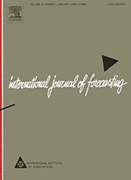 Forecasting Non-Incumbent Presidential Elections: Lessons Learned from the 2000 Election
Forecasting Non-Incumbent Presidential Elections: Lessons Learned from the 2000 Election
With Andrew Sidman and Maxwell Mak, Forthcoming at the International Journal of Forecasting.
Abstract: As the 2008 election approaches, we offer a reexamination of the 2000 election—its place in history, political science, and presidential forecasting models. This is especially relevant since 2008, like 2000, will be another election without a president seeking reelection. How should forecasting models deal with such elections? Looking carefully at 2000 we evaluate the utility of “weighting” candidates in non-incumbent elections. Using Bayesian Model Averaging, we find that weighting helps to better predict 2000, but also produces poorer model fit over a wider set of elections. For other non-incumbent elections, weighting only improves predictions for the 1960 election. Moreover, we find that the 2000 election is anything but ordinary; attempts by forecasters to change the specification of models to better fit the 2000 election are ultimately harmful to the forecasting exercise. We conclude that presidential forecasts are best when they ignore whether or not an incumbent is running.
With Daniel Cassino, Political Psychology, 28(6), 719-746 2007.
Abstract: Research in political psychology has shown the importance of motivated reasoning as a prism through which individuals view the political world. From this we develop the hypothesis that, with strong positive beliefs firmly in place, partisan groups ignore or discount information about the performance of political figures they like. We then speculate about how this tendency should manifest itself in presidential approval ratings and test our hypotheses using monthly presidential approval data disaggregated by party identification for the 1955–2005 period. Our results show that partisan groups generally do reward and punish presidents for economic performance, but only those presidents of the opposite party. We also develop a model of presidential approval for self-identified Independents and, finally, a model of the partisan gap, the difference in approval between Democrat and Republican identifiers.
*Data File (.xls) Data Dictionary RATS program
 Strategic Party Government: Party Influence in Congress, 1789-2000
Strategic Party Government: Party Influence in Congress, 1789-2000
With Adam McGlynn and Greg Koger, American Journal of Political Science, 2007, 51(3): 464-481.
Abstract: Why does the influence of Congressional parties fluctuate over time? The prevailing answer, conditional party government, holds that party influence increases when legislators agree ideologically with fellow party members and disagree with members of the opposing party. Under these conditions, legislators delegate power to party leaders to achieve desired policy goals. We propose an alternative model, Strategic Party Government, which instead highlights the electoral motives of legislative parties and the strategic interaction between parties. We test this new theory using the entire range of House and Senate party behavior from 1789 to 2000 and find that the strategic behavior of parties dominates ideology as an explanation for variation in party influence. Moreover, we find strong links between party behavior in Congress and electoral outcomes. An increase in partisan influence on legislative voting has adverse electoral costs, while winning contested votes has electoral benefits.
*Appendix to paper
 Reexamining the Growth of the Institutional Presidency, 1940-2000
Reexamining the Growth of the Institutional Presidency, 1940-2000
With Matthew J. Dickinson, Journal of Politics, 2007, 69(1): 206-219.
Abstract: Scholars differ regarding the reason for the institutionalization of a large, functionally specialized White House-centered presidential staff system during the last six decades. Among the explanations cited are a general growth in government size and complexity, an increase in the presidential workload, and the institutional rivalry between the president and Congress. However, using new advances in time series analysis based on fractional integration, we show that these models of staff growth are plagued by conceptual and methodological shortcomings that render their substantive conclusions misleading. In response, we develop and test a more comprehensive model of presidential staff institutionalization that takes into account the different ways in which this process takes place. Presidents institutionalize staff support, we conclude, to better manage relations with Congress, the media and the public. Government growth, policy complexity and presidential workload, on the other hand, play a much smaller role in this process than previous research indicates.
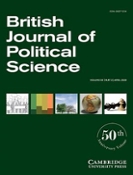 The PM and the Pendulum: Dynamic Forecasting of British Elections
The PM and the Pendulum: Dynamic Forecasting of British Elections
With Helmut Norpoth, British Journal of Political Science, 2007, 37(1): 71-87.
Abstract: We apply a dynamic perspective to forecasting votes and seats in British elections. Our vote model captures the swing of the electoral pendulum between the two major parties while using prime ministerial approval as the (sole) short-run predictor of vote choice. The seat model incorporates the inertia of the previous seat distribution while translating votes into seats. The models forecast the lead of one major party over the other (percentage for votes and number for seats). The statistical estimation includes data on British elections since 1945, although the test for cycles (swing of the electoral pendulum) goes as far back as 1832. The vote model picks the winner of every one of the 1945-2005 elections (out-of-sample forecasts) and is rarely off by more than 2 percentage points. The seat model does almost as well, rarely missing the seat lead by more than 25.
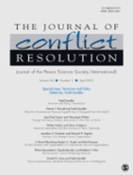 War President: The Approval Ratings of George W. Bush
War President: The Approval Ratings of George W. Bush
With Richard Eichenberg and, Richard J. Stoll, Journal of Conflict Resolution, 2006, 50(6): 783-808.
Abstract: The authors estimate a model of the job approval ratings of President George W. Bush that includes fives sets of variables: a "honeymoon" effect, an autoregressive function that tracks a decline in approval, measures of economic performance, measures of important "rally events," and a measure of the costs of war - in this case, the U.S. death toll in the Iraq War. Several significant effects are found, including the rally that followed the attcks of September 11, 2001; the commencement of the war in Iraq; and the capture of Baghdad in April 2003. Since the begining of the war in Iraq, however, the casualties of war have had a significant negative impact on Bush's approval ratings. Although the effects of additional battle deaths in Iraq will decrease approval only marginally, results suggest that there is also little prospect for sustained improvement so long as casualties continue to accumulate.
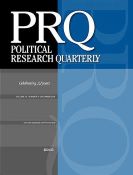 Election Cycles and the Economic Voter
Election Cycles and the Economic Voter
With Sean Carey, Political Research Quarterly, 2006, 59(4): 543-556.
Abstract: Many studies have sought to clarify how voters’ opinions of the economy predict evaluations of leaders and parties. Following Kramer’s (1983) work on the problems of studying individual-level data, many authors have employed aggregate data in dynamic analyses to estimate rival models and choose favored variables. A restriction with such analyses is that they are unable to look closely at different periods within the overall study and thus may miss the importance of contextual factors. Our study complements existing aggregate-level inferences by analyzing repeated cross-sections of opinion polls in Britain over several years. We estimate the effects of subjective economic variables on vote intention in monthly public opinion surveys and examine how the parameters vary across individuals and over time. We suggest that the choices of whether voters are forward-looking, backward looking, egocentric or sociotropic are overly restrictive. We find that the sociotropic dimension dominates the egocentric dimension in evaluations of the government and that the relative importance of prospective and retrospective evaluations vary in predictable patterns over the election cycle.
 The Impact of Economic vs. Institutional Factors in Elite Evaluations of Presidential Progress Toward Democracy in Latin America
The Impact of Economic vs. Institutional Factors in Elite Evaluations of Presidential Progress Toward Democracy in Latin America
With Benjamin G. Bishin and Robert Barr, Comparative Political Studies, 2006, 39(10): 1194-1219.
Abstract: Elites’ support for democracy and their satisfaction with political leadership are important factors in evaluating Latin American leaders’ progress towards consolidating their democracies. However, we know surprisingly little about how elites understand or define democracy and thereby evaluate leaders in terms of their progress towards democracy. Much of the literature on the opinions of elites is focused on their relative interest in democratic values and formal institutions. But is progress in these two areas really of utmost importance to elites? In order to better understand elite views of democracy, we use new survey data in which elites assess current politicians’ progress towards democracy. We find that the importance of perceived progress in democratic values – rights and liberties – and formal institutions is minor compared to the impact of perceptions of economic progress. That is, elite evaluations of democratic progress depend primarily on their perceptions of economic success and only secondarily on their perceptions of achievement of democratic values like respect for civil rights and civil liberties.
 Dynamic Foreign Policy Behavior
Dynamic Foreign Policy Behavior
With Will Moore, Journal of Conflict Resolution, 2003, 47(1): 13-32.
Abstract: How best to classify event counts of directed dyadic foreign policy behavior and howbest to model them are points of disagreement among researchers. Should such series be modeled as unit roots (“perfect” memory) or as stationary (“short” memory)? It is demonstrated that the dichotomous choice between unit root (I(1)) and level stationarity (I(0)) is overly restrictive. The intermediate (and more general) possibility of fractional integration (0 < I < 1), a concept proven useful in studies of aggregate opinion, is applied. Results showthat fractional integration is extremely common and that error correction mechanisms (ECMs) can still be appropriate in the absence of unit-root series. Fractional ECMs are used in action–reaction models of bilateral relationships to demonstrate this. Given the frequency of fractional integration, its flexibility, and the problems encountered when ignoring it, scholars should incorporate fractional integration techniques into their models.
 Fractional (Co)integration and Governing Party Support in Britain
Fractional (Co)integration and Governing Party Support in Britain
With Harold D. Clarke, British Journal of Political Science, 2003, 33(2): 283-301.
Abstract: Recent developments in the analysis of long-memoried processes provide important leverage for analysing time-series variables of interest to political scientists. This article provides an accessible exposition of these methods and illustrates their utility for addressing protracted controversies regarding the political economy of party support in Britain. Estimates of the fractionally differencing parameter, d, reveal that governing party support, prime ministerial approval and economic evaluations are long-memoried and non-stationary, and that governing party support and prime ministerial approval are fractionally cointegrated. Pace conventional wisdom that party leader images matter little, if at all, analyses of multivariate fractional error correction models show that prime ministerial approval has important short-run and long-run effects on party support. Prospective and retrospective personal economic evaluations are influential but, contrary to a longstanding claim, national economic evaluations are not significant. The article concludes by suggesting that individual-level heterogeneity is a likely source of the observed aggregate-level fractional integration in governing party support and its determinants. Specifying parsimonious models that incorporate theoretically meaningful heterogeneity is a challenging topic for future research.
 Modelling Memory and Volatility: Recent Advances in the Analysis of Political Time Series
Modelling Memory and Volatility: Recent Advances in the Analysis of Political Time Series
With Harold D. Clarke, Electoral Studies, 2000, 19(1): 1-7.
Abstract: Political scientists are fascinated by change — virtually all of them talk about it, and some spend their (professional) lives studying it. Over the past quarter-century, members of the latter group have employed an expanding toolkit of statistical pro-cedures to study the dynamics of support for political parties and party leaders. In the 1970s and 1980s, Box-Jenkins ARIMA techniques (Box and Jenkins, 1970; see also Lebo, 1999; McCleary and Hay, 1980) and VAR models (Sims, 1980) chal-lenged familiar OLS regression procedures (possibly with "corrections" for first-order autocorrelated errors) as the preferred methodology for analyzing time series data. Then, in the early 1990s, political researchers discovered the concept of cointe-gration and the utility of specifying error correction mechanisms to model the long-term dynamics of cointegrated series (Hendry, 1995). However, the recent introduc-tion of the idea of "long memory" to political scientists necessitates reexamination not only of the conclusions derived from earlier studies but also of the data them-selves and the estimation procedures used to analyze them. The papers in this special issue of Electoral Studies deal with some contemporary topics in the time series analysis of political data, especially the concept of long memory and the problems presented by fractionally integrated data. The concept of fractional integration has prompted reconsideration of the conven-tional wisdom of time series analysis and the underlying micro-level foundations of aggregate time series data. Until very recently, researchers interested in modelling political phenomena over time confined themselves to the "knife-edged" decision * Tel.
 You Must Remember This: Dealing with Long Memory in Political Analyses
You Must Remember This: Dealing with Long Memory in Political Analyses
With Robert W. Walker and Harold D. Clarke, 2000, Electoral Studies, 2000, 19: 31-48.
Abstract: Recent research by Box-Steffensmeier and Smith (Box-Steffensmeier, J.M., Smith, R.M., 1996. The dynamics of aggregate partisanship. American Political Science Review 90, 567–580; Box-Steffensmeier, J.M., Smith, R.M., 1998. Investigating political dynamics using fractional integration methods. American Journal of Political Science 42, 661–689) has alerted scholars to the problems involved in the analysis of fractionally integrated time series. This paper pursues this line of inquiry by compiling evidence on the time series properties of a number of common variables used in political research, including macropartisanship, presidential approval, the monthly and quarterly index of consumer sentiment, percentage liberalism in Supreme Court decision making, and others. In applying a variety of formal tests to these series, we fail to reject hypotheses of random walk or fractionally integrated processes while commonly rejecting hypotheses of stationary behavior. Evidence obtained from point estimates of the fractional differencing parameter, d, supports these findings while providing a glimpse into the long-memory characteristics of many political time series. Finally, Monte Carlo studies are performed that demonstrate the likelihood of spurious regressions when researchers fail to account for the fractional dynamics of time series.
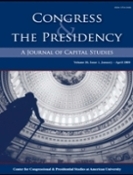 Divided Government, United Approval: the Dynamics of Congressional and Presidential Approval
Divided Government, United Approval: the Dynamics of Congressional and Presidential Approval
Congress and the Presidency 2008.
Abstract: A theory of partisan control might expect that during times of divided government, approval of one Congress and the Presidency would move in opposite directions. Yet, the Congressional approval question is an ambiguous one in the minds of voters and makes understanding the movement of the aggregated series much more difficult. Here, monthly Congressional and Presidential approval data for the 1995-2005 period are studied and found to move in tandem, even during periods of divided government. Multivariate ARFIMA Models show a strong and positive relationship between Congressional approval and lagged Presidential approval, even during the period of fiercely divided government under President Clinton. This means that, rather than paying attention to partisan control, the electorate transfers feelings about the president to the institution of Congress.
ARFIMA-MLM R-package documentation.pdf, 2015 (PDF)
ArfimaMLM-presentation (1).pdf, 2015 (PDF)
Final PDF.pdf, 2015 (PDF)
Grant and Lebo Error Correction Methods.pdf, 2015 (PDF)
Grant and Lebo PA Response.pdf, 2015 (PDF)
Lebo and Kraft R&P 2017.pdf, 2017 (PDF)
Lebo and Weber ajps12095.pdf, 2015 (PDF)
PASupp.pdf, 2015 (PDF)
PS Managing Your Research Pipeline.pdf, 2016 (PDF)
Pipeline PS.pdf, 2016 (PDF)
Political Analysis-2016-Grant-3-30.pdf, 2016 (PDF)
Political Analysis-2016-Lebo-69-82.pdf, 2016 (PDF)
RCS Power Point IMC January 2015.ppt, 2015 (PDF)
The GECM in Practice.pdf, 2017 (PDF)
Young and Lebo 2009.pdf, 2015 (PDF)

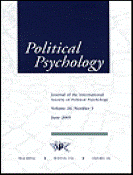 The Aggregated Consequences of Motivated Ignorance and the Dynamics of Partisan Presidential Approval
The Aggregated Consequences of Motivated Ignorance and the Dynamics of Partisan Presidential Approval